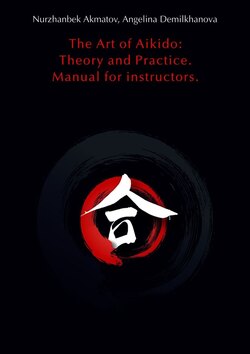Читать книгу The Art of Aikido: Theory and Practice. Manual for instructors - Angelina Demilkhanova - Страница 4
chapter 1. theoretical aspects of aikido
Morihei Ueshiba
ОглавлениеFounder of aikido, Guru Ueshiba Morihei, born December 14, 1883. Living in a turbulent time of modernizing Japan, he dedicated himself to creating martial arts that would meet the needs of ordinary people, but would not be anachronistic. Teacher Ueshiba’s foundations were based on the following principles: a great love for traditional martial arts, care that they are not misunderstood, and a deep desire to give new life to the spiritual quality of Budo. He took long path, based on constant martial arts training, to bring the truth of Budo through the events of modern Japanese history. Master Ueshiba certainly believed that the true Budo spirit could not be associated with an atmosphere of competition and struggle where brute force prevailed and the primary goal was to win at all costs. He believed that this spirit should be comprehended in the process of human perfection, both bodily and spiritual, through the accumulation of experience and training based on the spirit of martial arts. For him, only such a true manifestation of Budo had the right to exist in the modern world, beyond a particular culture or era. His purpose, deeply religious in essence, is reduced to one position: to connection of fundamental creative power of Ki permeating the universe, and individual Ki, inseparable from energy of breath of each separate person. Trough constant training of a body and a mind the condition of harmony of individual and universal Ki is reached, which is shown in dynamic movement of a stream of Ki energy, free and flowing, indestructible and invulnerable. This essence of Japanese martial arts included in aikido.
Ueshiba synthesized the ideas of aikido from the many martial arts he studied and from his mentors he met in his life. One of them was Takagi Kiathi’s ju-jutsu mentor, who would later introduce him to Taeda Sokaku, the great teacher of the Daito Ryu Aiki Ju-su school. At this school Ueshiba learned the idea of harmony of the world, the balance that underlies such cruel and dangerous martial arts, learned the mystical concept of «aiki», which later became the basis of his own martial arts system. Another meeting, which undoubtedly lies in the philosophy of aikido, was with Shintoist Deguti Onisaburo, leader of the Omoto-kyo sect («teaching the great beginning» – one of the Shinto schools). Deguti taught that a warrior’s answer must always be proportionate to the attack. In ancient times, a samurai could kill a samurai like him for a careless nod, for a sword improperly placed in the sheath, and a commoner could lose his head for no reason at all. Deguichi Onisaburo instilled a different approach to Weshiba: resistance to evil must be adequate to the attack. This idea became a basic one in aikido ideology.
In 1939 Ueshiba opened the first official aikido school at the small Shinto temple of Ivami. In 1948 he founded the Aikikai Association. The greatest growth in popularity of aikido was in the 50—60s of the 20th century.
Thus, aikido expresses the traditional culture of Japan, where it combines the so-called peaceful practices of Zen (calligraphy, tea ceremony, etc.), the principles of traditional Japanese arts of fighting, and also combines the philosophy of Zen Buddhism, Confucianism and Shintoism simultaneously.
One of the main notions of Zen Buddhism is the concept of Satori: in meditative practice, Zen is an internal personal experience of comprehending the true nature (of human) through achieving «the state of one thought».
Here is how Professor Ueshiba describes the satori which befell him after many years of rejoicing, self-mortification, fasting and meditation under the cascades. The event dates back to 1925, i.e. the time of the end of asceticism, when the ascetic moved to the village of Ayabe: «One day, walking in the yard, I suddenly felt a strange feeling, as if the earth trembled under my feet. Some golden mist began to rise from the ground, enveloping me. At the same second I felt the light in my mind and body, and it seemed to me that I could understand the language of the birds chirping around me. Suddenly, I felt close to me the presence of a great Creator in a spiritual form. A thought dawned on me: the basis of all martial arts should be the love for everything that exists on earth. From that moment on, and for the rest of my life, I understood that the whole world is now my home, that the sun and stars belong to me. High position in society, fame, honor, wealth – all this has for ever lost its significance for me».
